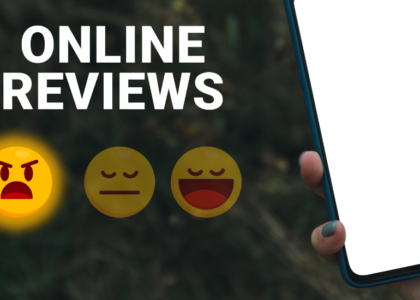Social media is a powerful tool for small businesses. It allows you to connect with potential customers, build brand awareness, and drive sales. But with so many different platforms out there, choosing the right ones for your business can feel overwhelming. Don’t worry, we’ve got you covered!
In this article, I’ll guide you through the process of selecting the perfect social media channels for your small business. I’ll explore key factors to consider, delve into popular platforms, and provide tips for developing a winning social media strategy.
Know Your Audience: The Foundation of Success
Before diving headfirst into any platform, understanding your target audience is crucial. Who are you trying to reach? What are their demographics (age, location, interests)? Where do they spend their time online? Once you have a clear picture of your ideal customer, you can identify the social media channels they frequent.
Here are some resources to help you define your target audience:
- Customer Relationship Management (CRM) Systems: If you have a CRM, it likely stores valuable customer data like demographics and purchase history.
- Website Analytics: Tools like Google Analytics can reveal where your website traffic comes from, including social media referrals.
- Market Research: Conduct surveys or focus groups to gather insights into your target audience’s social media habits.
Align Your Goals: What Do You Want to Achieve?
What are your overall social media goals? Do you want to increase brand awareness, drive website traffic, or boost sales? Knowing your goals will help you choose platforms that cater to specific objectives.
Here are some common social media goals for small businesses:
- Brand Awareness: Focus on platforms that allow you to share your brand story and visuals, like Instagram and Pinterest.
- Lead Generation: Platforms like LinkedIn and Facebook are great for capturing leads through targeted advertising and content marketing.
- Customer Engagement: Foster conversations with your audience on platforms like Twitter and Instagram.
Understanding the Social Media Landscape: A Platform Rundown
Now that you know your audience and goals, let’s explore some popular social media platforms and their strengths:
Still a social media giant, Facebook boasts a wide range of demographics and allows for diverse content formats, making it a good all-around platform. Groups and targeted advertising capabilities further enhance its appeal.
Who’s on Facebook?
Facebook is the most widely-used social media platform. You can reach:
- 2.934 billion active monthly users: That’s 47.1% of the global population aged 13 and up.
- Young adults and Gen Xers: 71.2% of Facebook users are between the ages of 18 and 44.
- Mobile device users: 81.8% of Facebook users only access the platform via their mobile device.
- People with more disposable income: 75% of people with an income over $75k are Facebook users.
A haven for visual content, Instagram is perfect for businesses with strong product aesthetics or lifestyle branding. Leverage Stories and Reels to connect with your audience in a dynamic way.
Who’s on Instagram?
With Instagram its about imagery. With Instagram you can reach:
- 1.22 billion people, 86.3% of whom are aged 44 and under.
- Gen Z users: it’s their top-rated social media platform of choice.
- Fans of nearly anything: fashion, cars, food, nature, art, sports, travel, wellness, and more.
The go-to platform for real-time conversations and thought leadership. Share industry news, engage in discussions, and participate in trending topics to build brand authority.
Who’s on Twitter?
With Twitter, you can reach:
- An audience of about 450 million monthly users.
- 25% of U.S. adults: The United States has the most Twitter users of any country.
- Gen Z and Millennials: 38.5% of Twitter users range between 25-34 years old.
- College-educated adults: 59% of Twitter users have a college degree or some level of college education.
- Men: While the number of men vs. women and other gender identities on Twitter in the US leans only slightly towards men, men account for 72% of Twitter’s user base globally.
- People interested in soccer: 70% of Twitter users report being fans of soccer.
- K-pop fans: In 2021 there were 7.5 billion tweets related to K-pop (Korean pop music).
- People with more disposable income: 41% of Twitter users have an income of at least $75,000/year.
- People active in politics: Even though the top 10% of Twitter users post 80% of Twitter’s US-based tweets, 69% of them tweet about politics – which makes for a large amount of political discussion on Twitter.
- People looking for news: 75% of people on Twitter actively follow news about politics and current events and come to Twitter specifically to stay updated on news stories.
- Gamers: PlayStation and Xbox have the most followers of any brand on Twitter.
The professional network, LinkedIn is ideal for B2B businesses or those targeting professionals. Showcase your company culture, share industry insights, and connect with potential partners or clients.
LinkedIn has nearly 850 millions users, and you can reach:
- 211 million people in North America.
- A global audience: 74% of users are outside of the U.S., including 222 million in Europe.
- Young professionals: a whopping 60% of LinkedIn’s users are 25 to 34 years of age.
- Businesses: 58 million companies are on LinkedIn, and four out of five people on LinkedIn drive business decisions in their companies.
Almost any business can be successful on social media; the trick is to pick the right platforms and focus your effort. Use each one for its greatest strengths instead of posting the same content everywhere. By combining a series of touch points, you can expand your audience, demonstrate expertise, build excitement, capture new buyers, and develop customer loyalty.
YouTube
The second largest search engine, YouTube allows you to create video content that educates, entertains, or showcases your products.
Who uses YouTube?
YouTube has nearly two billion monthly users and you can reach:
- 1.7 billion unique monthly visitors.
- Up to 81% of all internet users.
- 80% of children 11 and under (according to their parents).
- Men aged 25-34, who make up its largest ad audience.
Quality Over Quantity: Mastering the Art of Focus
It’s tempting to be everywhere at once, but spreading yourself thin across multiple platforms can be counterproductive. Remember, quality content and consistent engagement are key. Start by focusing on 1-2 platforms where your target audience is most active and tailor your content strategy accordingly.
Developing a Winning Social Media Strategy
Here are some final tips to get you started:
- Content is King: Create high-quality content that resonates with your audience. Mix up formats like images, videos, infographics, and engaging text.
- Be Consistent: Post regularly to stay top-of-mind and build a following. Develop a content calendar to plan your posts in advance.
- Embrace Authenticity: Let your brand personality shine through. Social media is a great platform to connect with your audience on a human level.
- Track and Analyze: Monitor your social media performance using platform insights or analytics tools. This data will help you understand what’s working and what’s not, allowing you to refine your strategy.
Conclusion
Choosing the right social media channels for your small business is an investment in your future. By following these tips and focusing on understanding your audience and goals, you can create a winning social media strategy that drives results and helps your business thrive. Remember, social media is a journey, not a destination. Stay curious, be adaptable, and have fun along the way!





